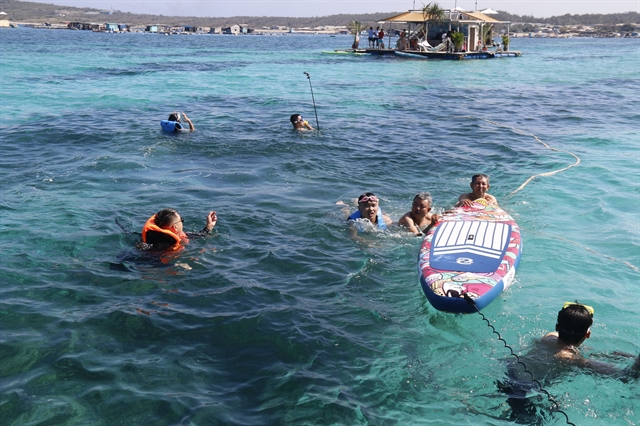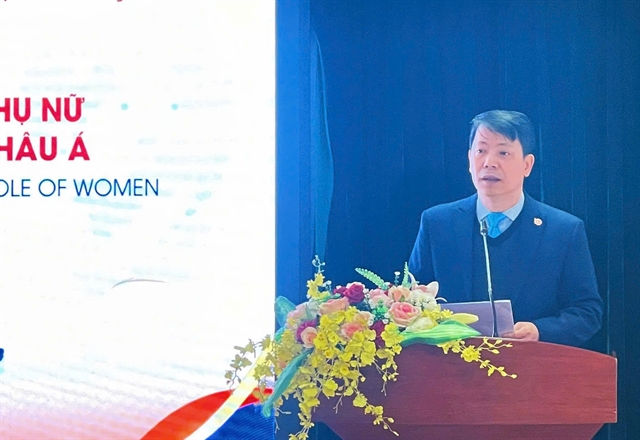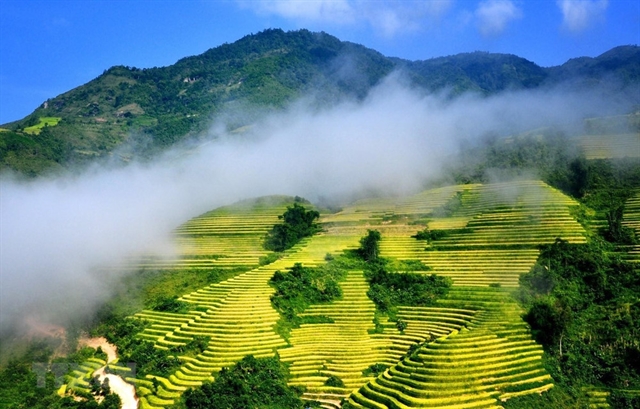 Environment
Environment

 |
| Bãi Cạn Beach in Lâm Đồng Province’s Phú Quý special zone attracts lots of visitors, especially young people. — VNA/VNS Photo Hồng Hiếu |
LÂM ĐỒNG — Lâm Đồng Province is implementing coordinated measures for marine conservation, protection and restoration of fisheries stocks and ecosystems.
Straddling parts of the south-central coast and Central Highlands, the province has a 52,000-square-kilometre maritime area with rich marine resources.
The province's People’s Committee has instructed relevant departments and agencies to implement comprehensive measures for protecting the resources to ensure sustainable marine development.
It has assigned the Department of Agriculture and Environment to finalise adjustments to the functional zoning and boundaries of the Hòn Cau Marine Protected Area and report on progress in the establishment of the Phú Quý Marine Protected Area.
The department will carry out projects to restore degraded coral reefs, seagrass beds and mangrove forests.
It will strengthen fisheries inspections to strictly handle violations such as encroachment, pollution and illegal exploitation within protected zones.
All coastal and island development projects must be closely monitored to prevent harm to marine reserves and fishery protection areas, according to the People’s Committee.
The province will reject and suspend operations that cause serious ecological damage and step up patrols and preventive efforts against destructive fishing practices and marine pollution.
Coastal localities and the Phú Quý Special Zone have been instructed to promote environmental and fishery resource protection laws, encourage participation in marine conservation efforts by communities, fishermen and enterprises and strengthen community supervision and feedback for projects affecting marine resources.
Relevant departments and sectors are required to oversee economic activities to ensure they do not negatively affect marine reserves and fishery protection zones.
The People’s Committee targets increasing marine and coastal conservation areas to at least 6 per cent of the country’s total while effectively implementing plans to establish and expand marine protected zones and fisheries resource protection areas by 2030.
The province is strongly promoting its marine and island potential, focusing on the two key sectors of fisheries and marine tourism to drive growth and improve the lives of coastal communities.
Fisheries are being developed comprehensively, from catching and aquaculture to processing and export, while marine tourism continues to build its brand with popular destinations such as Mũi Né, Phan Thiết and Phú Quý.
The province has implemented numerous effective conservation programmes and projects, including an annual campaign that urges the public to protect, restore and develop fishery resources.
The province views conservation as tied to sustainable livelihoods, and so seeks public consensus for carrying out marine economic development policies.
The department will develop a sustainable financial mechanism for the marine protected area and a community-based eco-tourism development plan at the Hòn Cau Marine Protected Area.
Established in 2010, the Hòn Cau Marine Protected Area, one of the country’s 16, covers a total of 12,500ha, including 12,360ha of sea and 140ha of islands.
It is home to 234 coral species and the country’s highest diversity of soft coral, with more than 65 genera.
Besides serving as a nesting ground for sea turtles, it is also home to hundreds of species of fish, molluscs, crustaceans, and reptiles, offering great value for conservation and scientific research.
The province remains determined to prevent violations in marine protected areas, environmental pollution and ecosystem destruction and illegal fishing.
It is enhancing regional cooperation and developing marine economic value chains linked to resource restoration and environmental protection, striving to become a province with a comprehensive and sustainable marine economy that makes a vital contribution to the national marine economic strategy. — VNS




